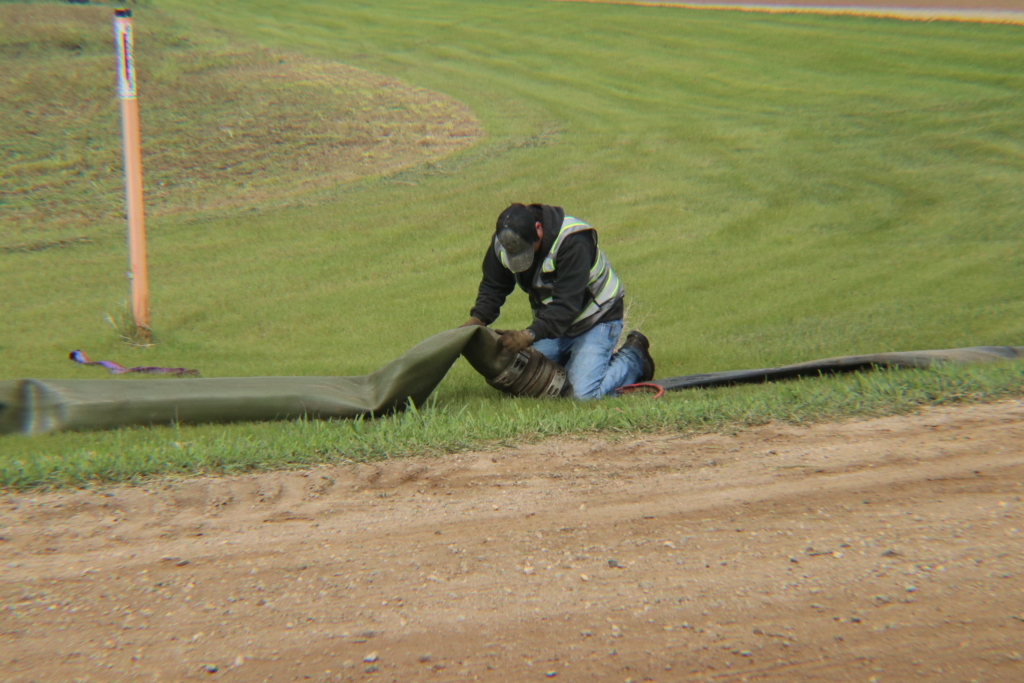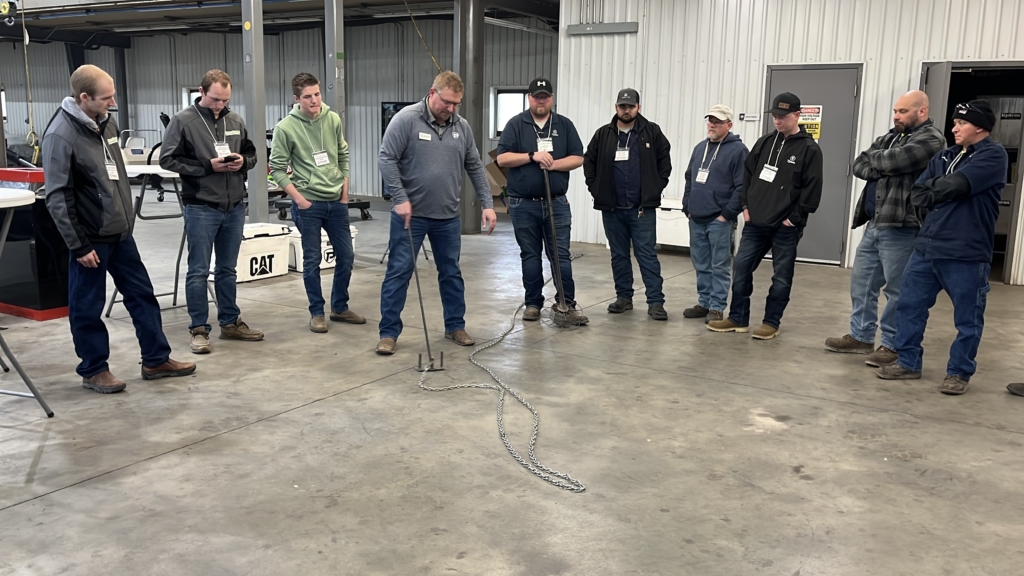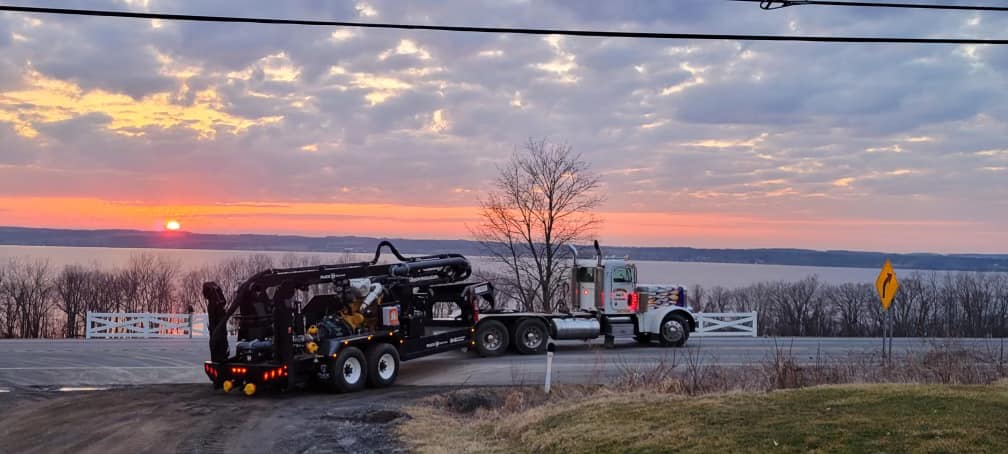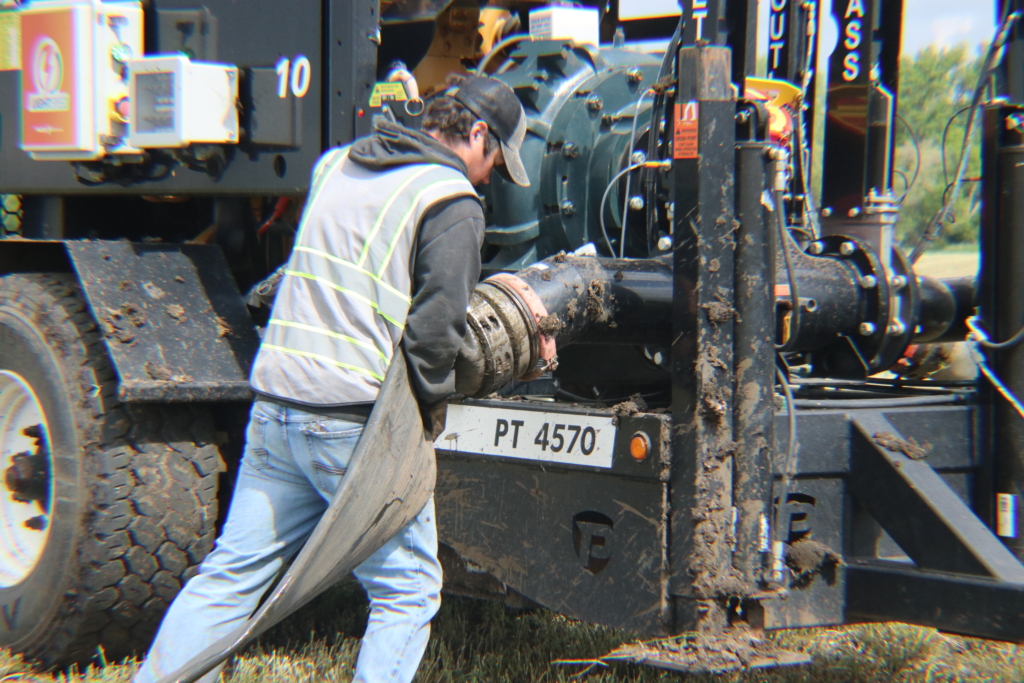
Safety, Safety, Safety
A version of this article was written for Progressive Dairy Magazine and can be found on their website.
A major factor in operational safety in manure application is knowing what could go wrong and how to mitigate those risks. Various causes can lead to minor incidents or, at worst, a disabling injury. There are a few things you can do before and during a job to keep the risk of accidents low.
Dressing for the job

The proper attire is one simple way to mitigate safety risks at a job site. Gloves, boots, and long pants can help minimize minor scratches and cuts. When working near large equipment, glasses and ear plugs can help protect long term health. When it comes to manure application, a dragline requires a lot of moving parts. It is recommended that anyone in the field or at site wear hi vis shirts or reflective vests to improve visibility.
Dairy and cattle barns are less dangerous than hog barns in regards to hydrogen sulfide (H2S), but a monitoring system can still be helpful when inside. High hydrogen sulfide levels can create various symptoms in humans, and can eventually lead to coma or death if levels get too high. Dairy and cattle barns are still an enclosed space with animals, so a proper face mask or respirator can help protect against harmful dust and odors.
Importance of communication
Every crew member of your dragline operation should be aware of what’s happening at any moment. Communication devices should be tested at the start of each day and chargers, cables, and headsets should be readily available. Relay your next step over the line, and then stick to doing that task with full focus. Unnecessary chatter can be distracting when you’re firing up, shutting down, laying hose bowties, and more.
If there is a language barrier among crew members, a shorthand should be established and trained for each employee before stepping onto the site. Communication is a two-way street. Every crew member should be able to understand the risks and procedures of their job as it happens.
Personnel training
Before they ever step onto the field, every crew member should be fully trained on their roles and responsibilities. This includes the exact equipment they are to use, as well as the overall plan for the job. Crew members should also know when their equipment is in need of maintenance.
Shutdown thresholds and procedures
Each crew member should be fully trained in the criterion for when to begin shutdown procedures. Knowledge of what to do when an issue arises includes knowing when to make the call up the chain of hierarchy. Stopping the flow of manure or further damage should take priority, but authorities may need to be notified in catastrophic events. A spill kit is recommended at each job site. This should contain important phone numbers, flags or flares, triangles, bales, pumps, shovels, shutoff valves, a fire extinguisher, a first aid kit, plywood, and more.

Equipment transportation

When moving your equipment to the job site or the next field, there are precautions to take to ensure the safety of your crew and other drivers on the road. Always check local laws concerning the transportation of agricultural equipment on public roadways as they vary from state to state. Keep your speed below 35 MPH when transporting equipment to prevent potential rolls or instability. Securing the equipment well and checking tire pressure to meet the manufacturer’s recommendations can also provide stability to the equipment you’re pulling. Safety chains and pins should also be secured in place, and operators should avoid towing more than one piece of equipment at a time.
Manure storage and agitation
Manure stored in a tank produces carbon dioxide (CO2), methane (CH4), ammonia (NH3), and hydrogen sulfide (H2S), among others. Although manure lagoons are outdoors and therefore carry less risk than confinement barns, these chemicals can cause serious damage or even death when found in high concentrations. Hydrogen sulfide and methane accumulate in the foam bubbles of foaming pits. During manure agitation and pumping, the foam is disturbed, releasing large amounts of these gases.
Even without agitating, manure storage can be very dangerous. Every precaution should be taken to maintain a safe distance from the manure lagoon or other storage. Any person entering a barn during agitation should be wearing an H2S monitor and minimize their time in a confined space.
Hose precautions
When attaching hoses, make sure that you are using lines with approved clamps. All fasteners should be placed in a downward position. This ensures they do not fall out when the pump unit is running. Contained air can be very dangerous. Be sure to bleed off any air pressure in the hose lines before attaching hoses. Before unhooking any hoses, clamps or caps, open all of the gates and carefully open the pressure relief valve to ensure all of the air pressure is relieved from the hoses and piping.
Changing hose couplers
Improper installation of large diameter hose couplings can cause problems and personal risk down the road. The most important aspect of coupler installation is getting the tightness just right to avoid complications. A coupler that is too loose may slip off, and one that is too tight may lead to sheared bolts or cutting structural yarn that leads to a ripped hose. We recommend tightening the coupler bolts to a maximum of 60 ft-lb. It’s easy to over-tighten the nut if you use an impact wrench or breaker bar. A good rule of thumb is to get it as tight as you can with a T-handle allen wrench.

Operating pump units
When the pump is in operation, people and foreign objects should remain clear of the unit. In addition to avoiding loose clothing near pump units, keep body parts away from pinch points, crush points, or rotating parts. The fan is particularly dangerous and may cause serious injury. Be sure to turn the engine off and wait for the fan to stop moving before servicing. No one – for any reason – should be on the pump while it is in operation.
When the pump unit is in motion or about to be operated, the operator must be inside the tractor cab, and any other people need to maintain a distance of at least 20 feet. Driving or parking pump trailers on steep slopes may lead to the pump unit rolling or losing balance, which can cause serious injuries. LightSpeed’s remote telemetry operations allow you to control every pump in the line from a safe distance. Additionally, LightSpeed gives operators the ability to shut down at a moment’s notice.
The dangers of compressed air

Pigging the line is the most dangerous task dragline operators do. Using compressed air to move the pig creates air pressure that's erratic and unpredictable. The hose line turns into a container of stored energy until the pig clears the line. If a hose ruptures, air should be shut off as soon as it is safe to do so, and everyone should remain at a safe distance (a minimum of 50 feet) out of the way until the air bleeds off entirely.
Every Puck pump comes with an integrated pigging system, and LightSpeed is standard equipped to provide additional safety. Operators can ensure all personnel are a safe distance away before sending the pig from any connected, web-enabled device. Pigging the line from the bypass with the LightSpeed control system keeps the job moving and makes for quick set changes in the field with maximum efficiency.
The biggest precaution you can take to ensure the safety of your crew is proper training. There are things personnel should know before stepping onto a job site. Each crew member should be fully versed in good safety practices and risks involved with their roles and responsibilities. Consider adding a mandatory safety meeting to your preseason planning.
Puck hosts Pump School many times a year, typically in winter or summer. These free, two-day sessions cover a range of topics, including in-depth safety discussions. Register your crew for an upcoming Pump School to learn more. Contact a sales representative to learn more about safety in manure application operations.

